 |
 |
 |
| |
INTACT PROVIRAL DNA LEVELS DECLINE IN PEOPLE WITH HIV ON ANTIRETROVIRAL THERAPY - new intact proviral DNA assay
|
| |
| |
CROI 2020
http://www.croiwebcasts.org/console/player/44681?mediaType=slideVideo&
Rajesh T. Gandhi1, Joshua C. Cyktor2, Ronald Bosch3, Hanna Mar3, Gregory Laird4, Albine Martin4, Ann Collier5, Sharon Riddler2, Bernard J. Macatangay2, Char
1Massachusetts General Hospital, Boston, MA, USA,2University of Pittsburgh, Pittsburgh, PA, USA,3Harvard T.H. Chan School of Public Health, Boston, MA, USA,4Accelevir Diagnostics, Baltimore, MD, USA,5University of Washington, Seattle, WA, USA,6University of North Carolina at Chapel Hill, Chapel Hill, NC, USA,7Johns Hopkins University School of Medicine, Baltimore, MD, USA
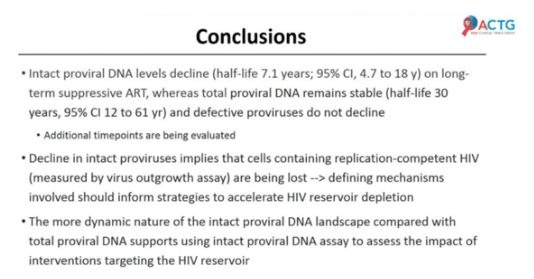
Abstract
The intact proviral DNA assay (IPDA) is a new, more-specific ddPCR-based measure of the replication-competent HIV reservoir. Little is known, however, about whether intact proviral DNA levels decline over time on ART and whether the levels correlate with other measures of HIV persistence or with immune activation.
Participants in ACTG A5321 with chronic HIV and well documented virologic suppression on ART had the following measurements performed on blood samples: intact proviral DNA, total proviral DNA (sum of defective, hypermutated and intact proviruses), total HIV DNA by qPCR targeting 3’ integrase, cell-associated HIV RNA (CA-RNA), plasma HIV RNA single copy assay (SCA), T cell activation, and inflammation (IL-6, IP-10, sCD14, sCD163, neopterin, TNF-alpha, hsCRP). Testing was performed at median of 7.1 yr after ART initiation (time point 1) and again a median of 3.7 yr later (time point 2).
Fifty participants (26% female) were evaluated. Intact proviral DNA levels declined significantly between time point 1 (n=50) and time point 2 (n=48): median of 57 and 41 copies/million CD4 cells, respectively; p<0.001 (Figure). By contrast, total proviral DNA was stable: median of 551 and 580 copies/million CD4 cells, respectively. The estimated (median) half-life of decline for intact proviral DNA (n=44 participants) was 6.5 yrs (95% CI 4.5, 11.2), whereas that for total proviral DNA was 22.9 years (95% CI, 11.1 to 60.9). Six participants had decline in intact proviral DNA to undetectable levels. Higher on-ART intact proviral DNA levels correlated with higher on-ART total HIV DNA (r=0.48), higher CA-RNA (r=0.46) and higher SCA (r=0.39) (time point 1; all p-values 0.005). No associations were seen between on-ART intact proviral DNA levels and on-ART T cell activation or inflammation.
In people on long-term ART, intact proviral DNA levels decline significantly (half-life 6.5 yr), whereas total proviral DNA remains stable over the same time period (half-life 22.9 yr). A subset of individuals had a decline in intact proviral DNA to undetectable levels. The overall decline in intact proviruses implies that cells containing replication-competent proviruses are being lost. Defining the mechanisms involved should inform strategies to accelerate HIV reservoir depletion. The more dynamic nature of the intact proviral landscape, compared with total proviral HIV DNA, supports the use of the IPDA to assess the impact of interventions targeting the HIV reservoir.


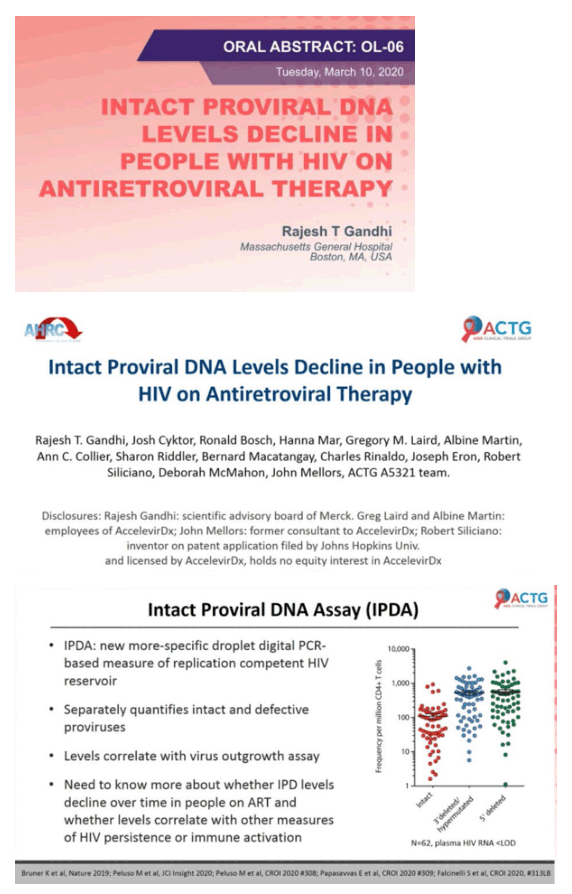
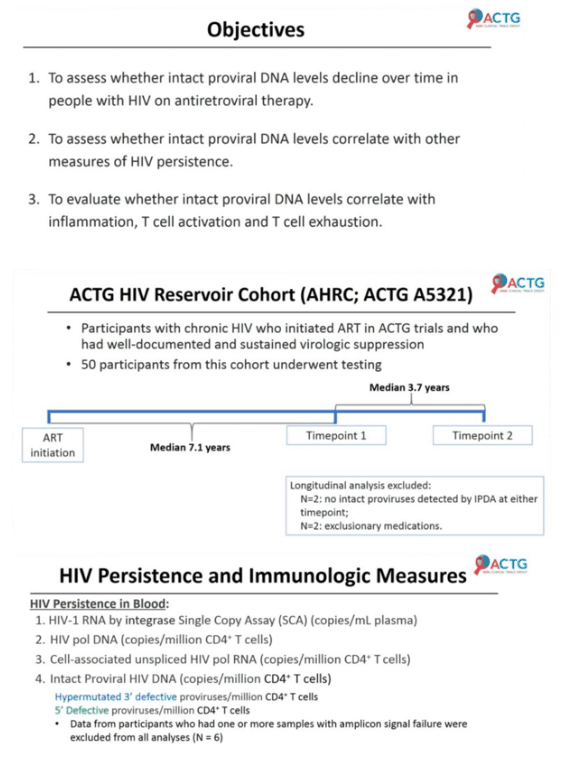
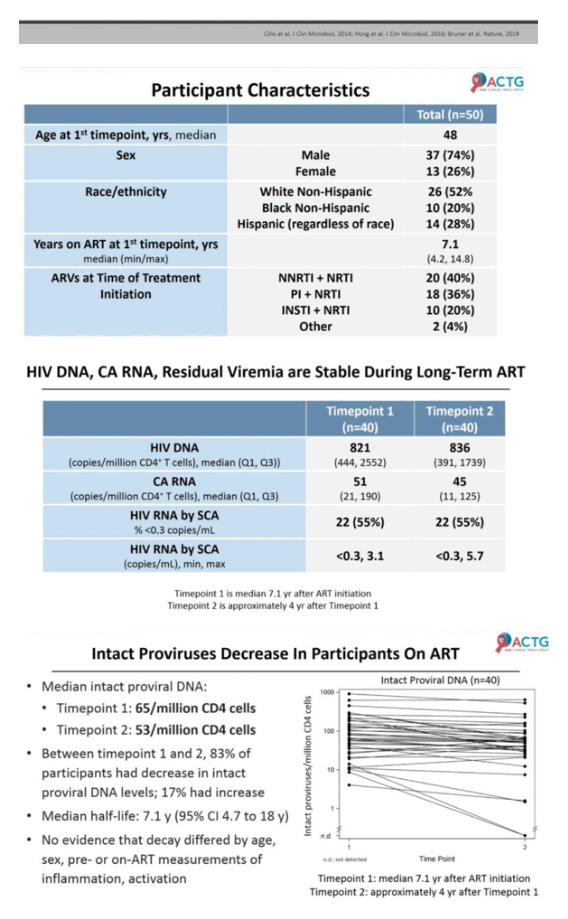


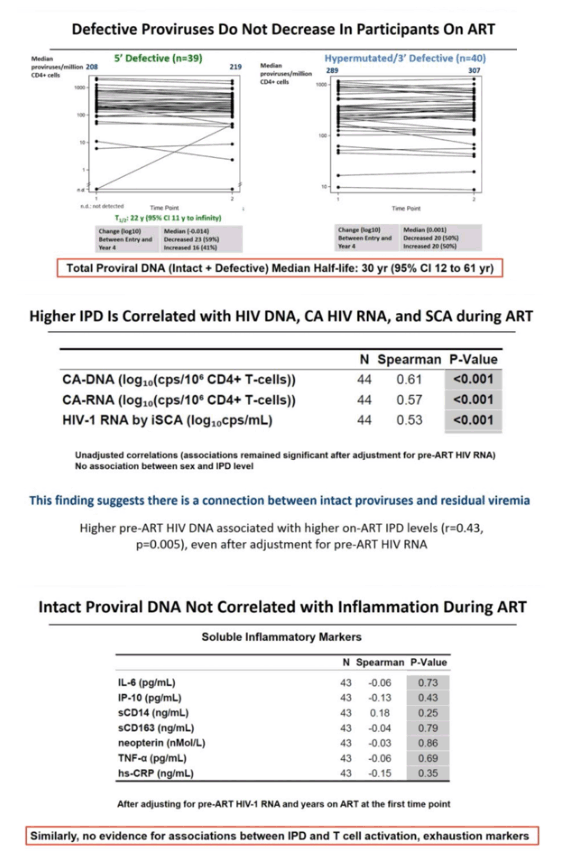
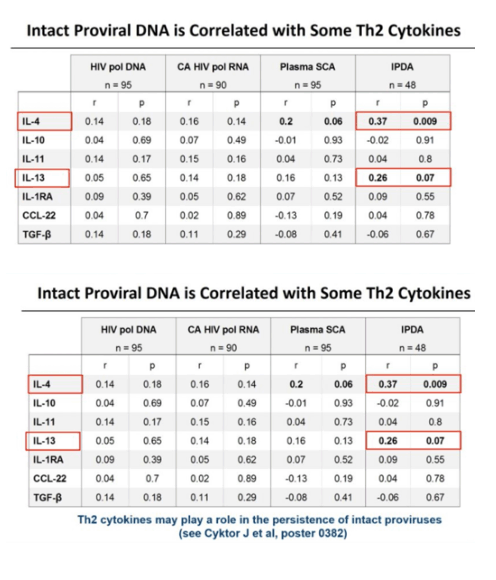
|
| |
|
 |
 |
|
|